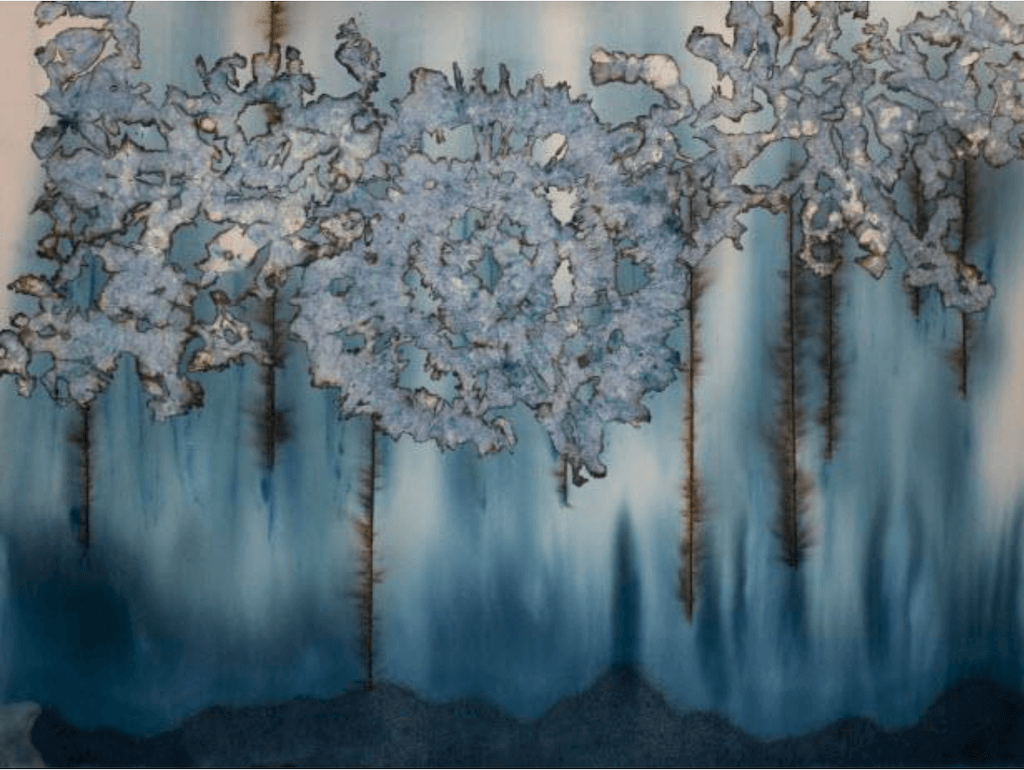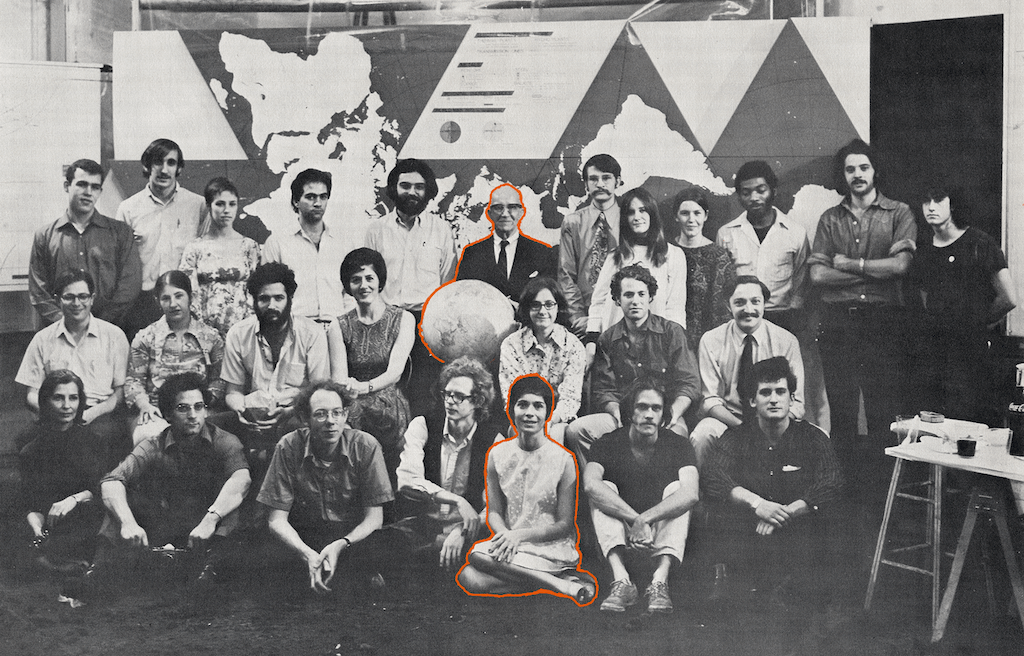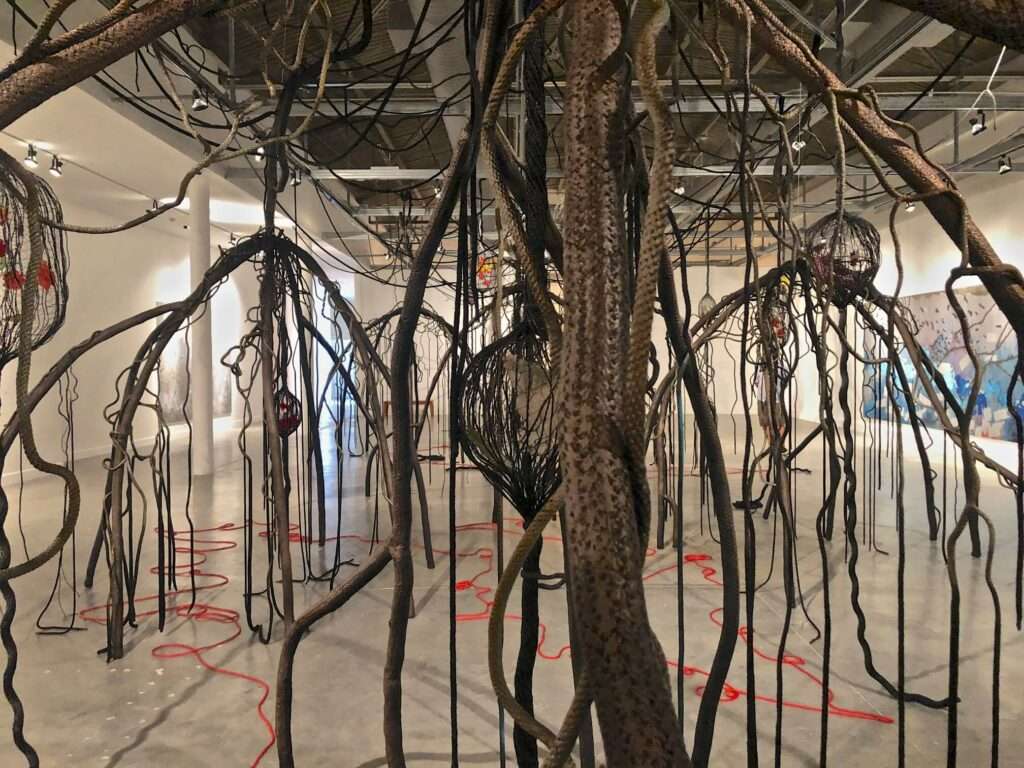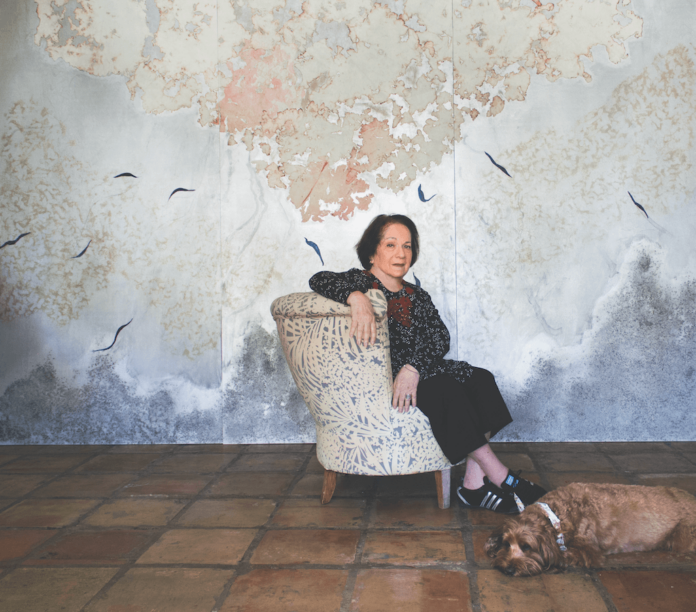Nature’s Rallying Cry is the first exhibition celebrating nationally acclaimed eco-feminist artist Mira Lehr following her death in January. The show comes to the C. Parker Gallery in Greenwich, Connecticut.
The new show, Nature’s Rallying Cry: Honoring Mira Lehr (1934-2023) will feature some of the last paintings from the acclaimed eco-feminist artist following her passing in January at age 88.
Lehr named the show Nature’s Rallying Cry just days before she passed. The show will feature 26 artworks created in the last four years of her life, including her last piece, which was completed just days before her death.
“The C. Parker Gallery is thrilled to bring Mira Lehr’s important artworks to the northeast for this show. Lehr was a pioneer in the arts, a leader in environmental activism, and a champion of women. Lehr’s vision of a better world shines through in this exhibition,” Tiffany Benincasa, owner of the C. Parker Gallery, said in a statement.
“This collection gives tribute to both Mira Lehr and some of her final artworks. During the week of Art Basel Miami Beach, I was honored to work with Mira at her home studio, where she invited me to collaborate on selecting works. As we continued this selection process into January, I could not have imagined this would be the last time Mira Lehr would personally plan an exhibition,” she said.
Mira Lehr’s art
Lehr was a celebrated artist and environmental activist at the forefront of environmental activism for more than five decades. Her work was deeply rooted in the natural world and the environment, and she was a vocal advocate for environmental conservation and sustainability.
Born in New York City in 1934, Lehr grew up in an artistic family. She quickly developed a passion for painting studying with the renowned abstract expressionist Hans Hofmann. She earned a degree in art history from Vassar College and did post-graduate work at the School of the Museum of Fine Arts, Boston. Lehr also received a Rockefeller scholarship that supported a studio in Carnegie Hall.
Lehr’s artistic career began in the 1960s when she moved to Miami where she quickly became part of the city’s thriving art scene, becoming friends with many of the leading artists of the time, including Joan Mitchell, Robert Rauschenberg, and James Rosenquist. Lehr’s early work was influenced by the abstract expressionist movement, and she worked primarily in large-scale paintings.

Over time, Lehr’s work evolved, and she began to incorporate more natural elements into her paintings. She became interested in the natural world and began to explore themes related to the environment and sustainability, incorporating images of water, plants, and animals, and she began to experiment with different materials, such as resin and metal.
It was her use of resin in the 1970s that became one of Lehr’s most significant artistic achievements as she pioneered the medium. Lehr’s resin paintings are characterized by their luminosity and transparency. Her use of resin also reflected her concern for the environment as resin is a material that can be recycled and reused.
Lehr’s work has been exhibited in galleries and museums around the world, including the Museum of Fine Arts, Boston, the Getty, and the Smithsonian American Art Museum. Lehr received numerous awards and honors for her work, including a Lifetime Achievement Award from the National Association of Women Artists and a South Florida Cultural Consortium Fellowship.
Lehr co-founded Continuum, one of the country’s first women-led artist collectives that ran for more than 30 years. In 1969, a year before the first Earth Day, she was one of two artists selected by the visionary Buckminster Fuller for his groundbreaking World Game Project to spearhead sustainability and nurture the planet.
“I have always been for women in art,” Lehr told Forward last year. “I wasn’t a militant feminist, but I was a verbal and pictorial one. So I did a lot of work promoting women’s causes through my art.
“And the ecology thing happened after I worked with Bucky Fuller in 1969, when I became very concerned about the future of our planet,” she said.

Last December, during Art Basel Miami Beach, Lehr’s work was selected for three concurrent exhibitions during Miami Art Week.
Lehr’s work encompassed painting, design, and sculpture, as well as video installations. Her processes included non-traditional media including exploding fuses across her canvas with gunpowder and fire, burning holes that left imprints on her paintings.
The late art critic Irving Sandler once said that what made Lehr’s work different was “the specificity of her references to nature.”
“I was trying to think of any other artist working in this tradition who did it quite as explicitly as Mira does, and I couldn’t come up with one,” he said.
Mira Lehr’s environmental activism
Lehr’s work as an environmental activist was just as important as her artistic career; she was an outspoken advocate for environmental conservation and sustainability over the course of her career, leveraging her work to reflect her concern for the natural world and her desire to protect it.

Her activism began in the 1960s when she became involved in the fight to preserve Biscayne Bay, a fragile Florida ecosystem that was threatened by pollution and development. Lehr was one of the founding members of the Environmental Coalition of Miami and the Beaches, a grassroots organization that worked to protect the environment.
Lehr’s environmental activism continued from there; she worked on a variety of environmental issues including the protection of the Everglades, and the fight against climate change; Lehr collaborated with other artists and activists on public art installations that address environmental issues.
One of Lehr’s most significant environmental projects was her work with the Delouise Waste Water Treatment Plant in Miami. Lehr was commissioned to create a public art installation that would educate the public about the importance of water conservation and sustainability. It was a testament to Lehr’s ability to merge her art with her activism.
The installation, titled Tracing the Red Thread, featured a series of large-scale resin sculptures that represent the flow of water through the treatment plant. The sculptures were illuminated at night, creating a stunning visual display that raised awareness about water conservation and sustainability.
Lehr told Forward she thought we have “like 30 years” of continuing our dependence on fossil fuels. “[I]f we’re still burning fossil fuels, we will have had it,” she said. “Then the environment won’t correct. So I’m trying to bring out the message, too: ‘Stop using fossil fuels’.”
Nature’s Rallying Cry overlaps with both Women’s History Month and Earth Day. It’s on display at the C. Parker Gallery in Greenwich, Connecticut, through April 26 and includes a special panel discussion led by the New York-based art historian/critic Eleanor Heartney about Lehr’s legacy and impact upon the art world.
Related on Ethos:


